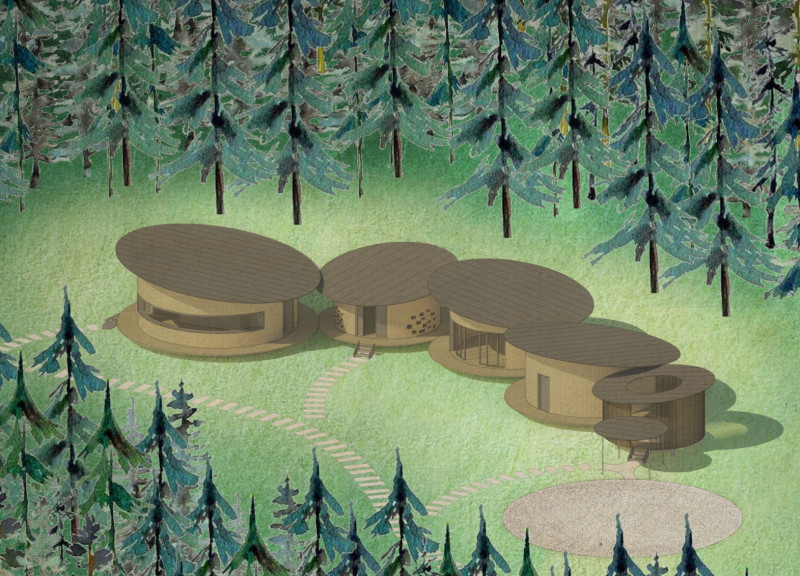5 key facts about this project
## Overview
The "Seven Chakras" project is located within the dense forests of Latvia, designed to reflect the principles of yoga and wellness while drawing inspiration from the concept of the seven chakras—energy centers within the human body. The architecture integrates the surrounding landscape into its design, creating a setting that encourages a deep connection with nature while facilitating various wellness activities, such as yoga and meditation. The layout is organized around a series of circular structures, each corresponding to a specific chakra, which underscores the importance of balance and harmony in both design and user experience.
## Spatial Organization and Functional Layout
The project features a series of circular buildings, each serving distinct functions to support the overarching wellness philosophy. The central indoor yoga space connects seamlessly with nature through large sliding doors, allowing for an immersive practice. Adjacent to the yoga area is a meditation ring designed for reflection, while the communal kitchen promotes social interaction among guests. Additional facilities, including a locker room and an outdoor yoga space, further enhance usability and cater to a range of visitors—from yoga practitioners to those seeking relaxation. Pathways between these structures are carefully designed to reflect the fluidity of movement in yoga, facilitating ease of access while maintaining the overall aesthetic integrity.
## Material Selection and Environmental Considerations
The design prioritizes sustainability through the use of environmentally responsible materials. Cross-laminated timber panels shape the curved forms of the buildings, providing structural strength while maintaining a natural aesthetic. Prefabricated timber frames expedite construction, and traditional mortise and tenon joinery enhances both durability and visual appeal. In addition to wood, local natural stones and gravel are utilized in landscaping to anchor the project within its ecological context. Eco-friendly paints and finishes further align with the sustainable ethos underpinning the design, ensuring minimal environmental impact without compromising longevity or quality.






















































